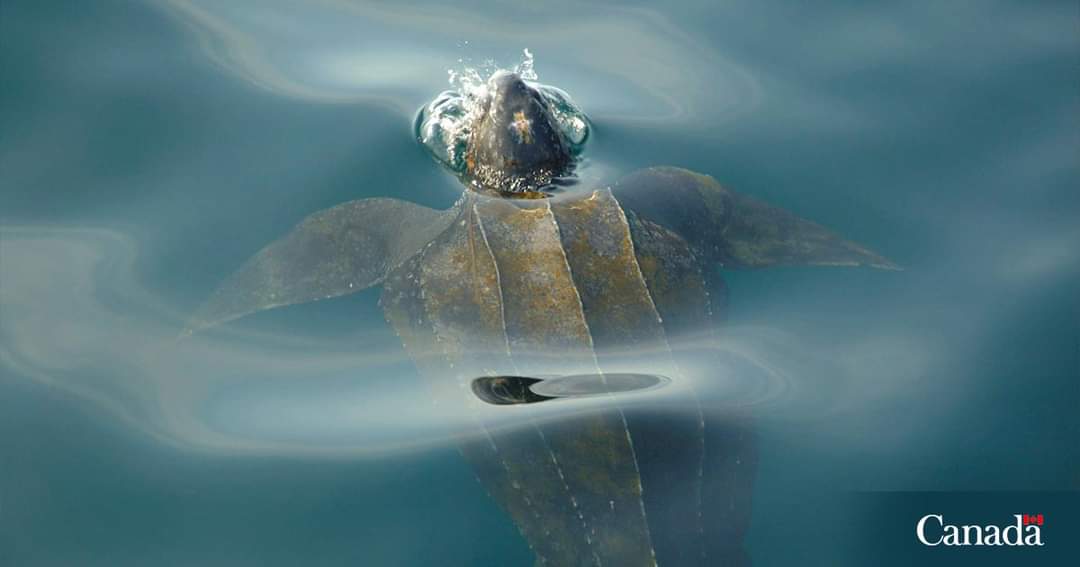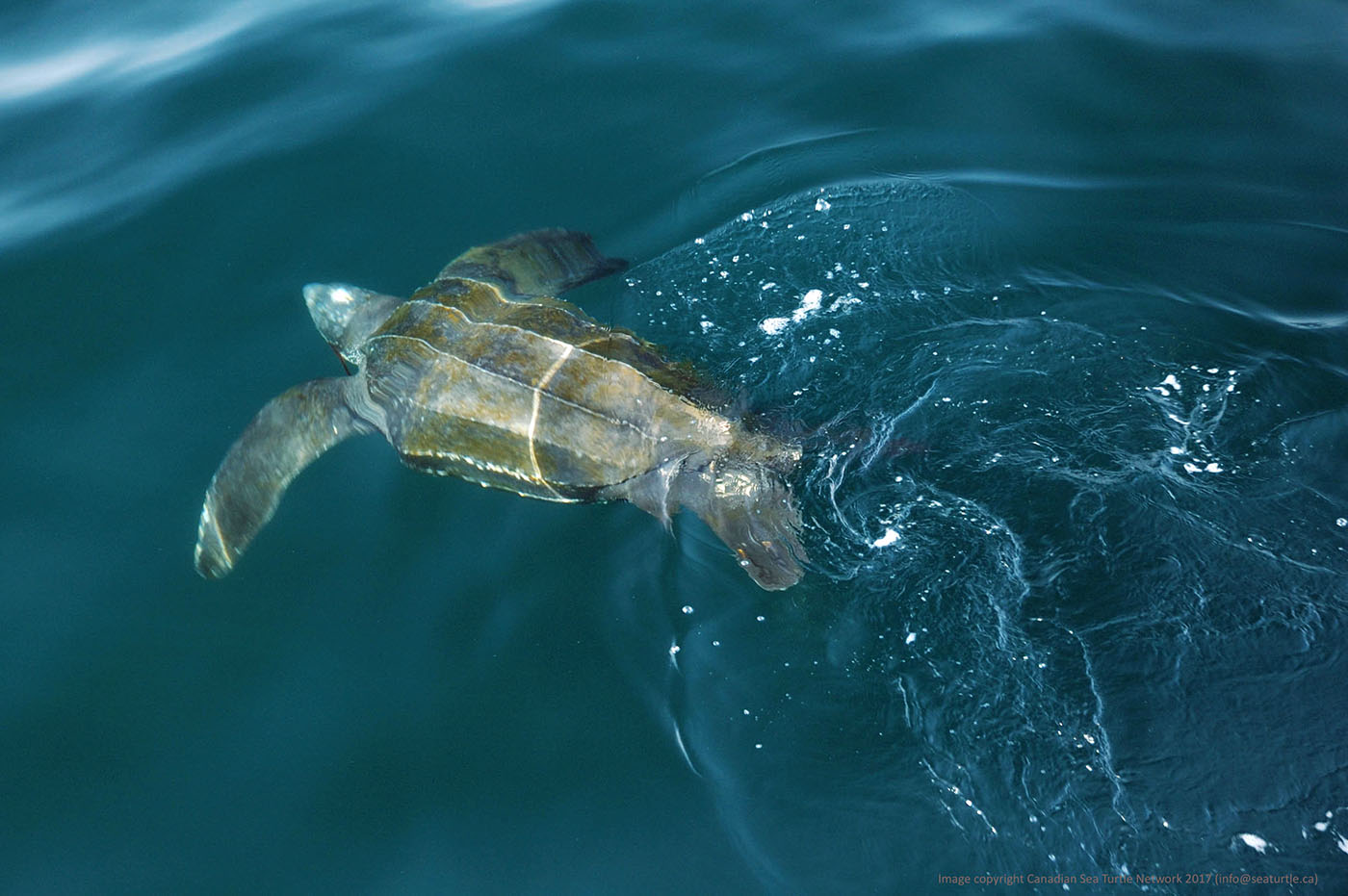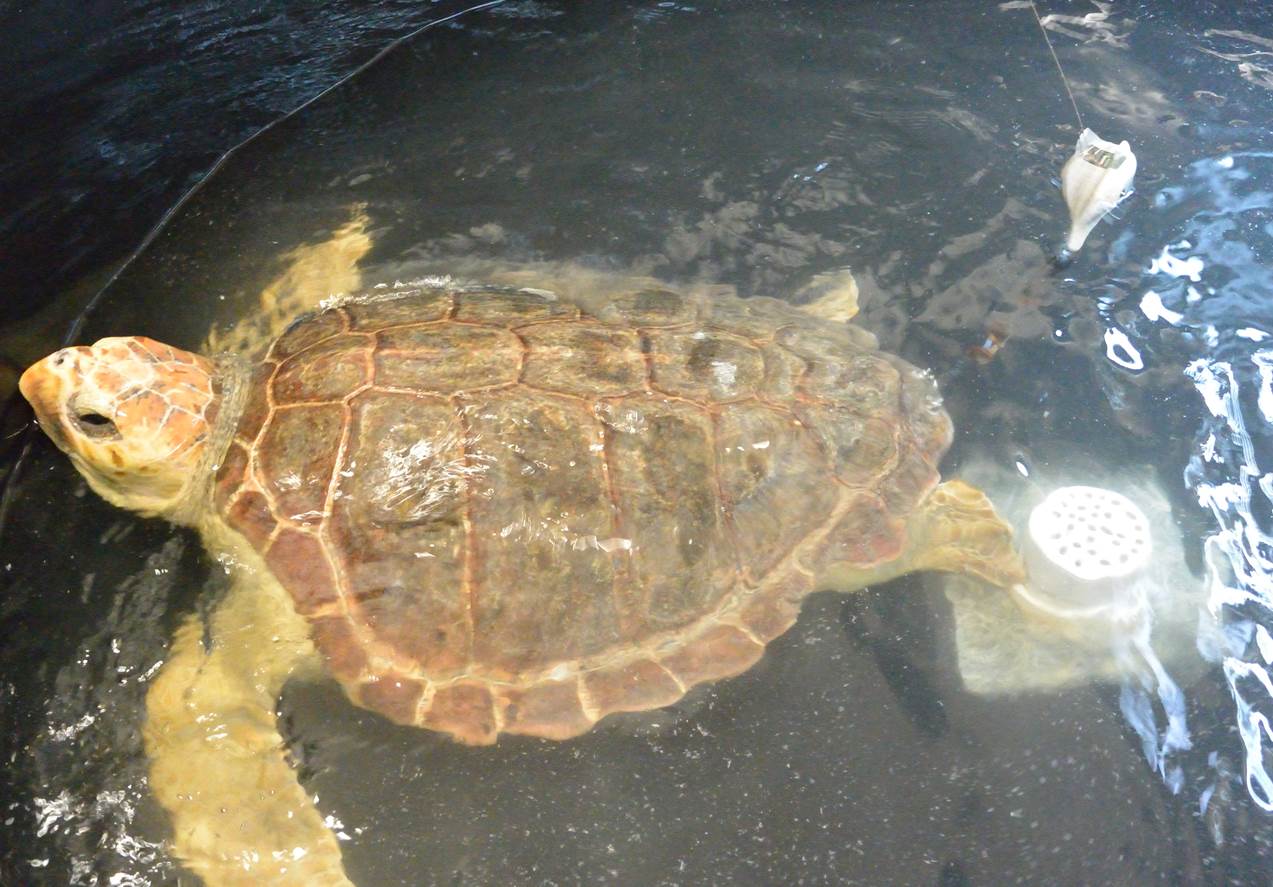**** DFO Release
Did you know that there are four species of marine sea turtles that live in or visit Canadian waters?

Sea turtles in Canada
Canadian waters are home to several sea turtle species, including:
- Leatherback Sea Turtle (Atlantic and Pacific populations)
- Loggerhead Sea Turtle
- Kemp’s ridley Sea turtle
- Green Sea turtle
Sea turtles live in a variety of habitats. In Canada, this includes both coastal and offshore waters. They feed seasonally in Canadian waters.
Sea turtles have large front flippers that make them strong swimmers. Most have a hard shell (carapace). The Leatherback’s carapace is covered in leathery skin. Unlike freshwater turtles and tortoises, sea turtles can’t pull their limbs and head inside their shell for protection..
Life history
Female turtles return to the same tropical or subtropical beach they hatched to deposit their eggs. They dig nests, lay their eggs and bury them.
After a period of incubation, sea turtles hatch from their eggs and quickly leave the nest to make their way to the ocean.
Some species of turtles spend their early years floating in offshore beds of seaweed that follow large ocean currents.
It takes sea turtles 15 or more years to reach reproductive maturity. The exact life expectancy of sea turtles is not known, but they can live many decades.
Sea turtles make large annual migrations from their northern feeding areas down to their reproductive and nesting areas in the southern U.S. and the Caribbean.
Conservation
Sea turtles are of global conservation concern. Several populations are in a state of decline. In Canadian waters, sea turtles may be affected by the following anthropogenic threats:
- fisheries bycatch (accidental catch when fishing for other species)
- entanglement
- pollution
- underwater noise
- vessel strikes
- climate change
In Canada, the following sea turtle populations are protected under the Species at Risk Act:
- Loggerhead Sea Turtle
- Leatherback Sea Turtle (Atlantic and Pacific populations)
Help protect sea turtles
You can help protect sea turtles by using less plastic. Sea turtles may mistake plastic waste for food. They may also get tangled up in various kinds of plastic, such as 6-pack rings from soda cans or packing straps. This can injure them or make it hard for them to swim or feed.
Ways to reduce your plastic waste:
- use reusable shopping bags
- recycle plastic whenever possible
- drink from refillable water bottles
- pack your lunch in reusable containers
- refuse single-use plastics, like straws and bags
- put your garbage in a trash container with a lid






